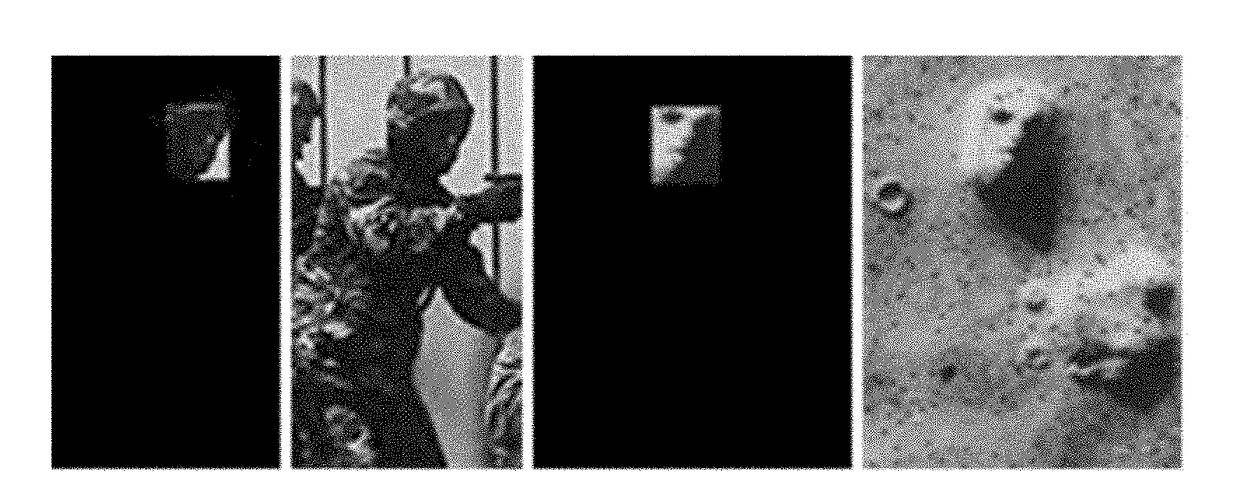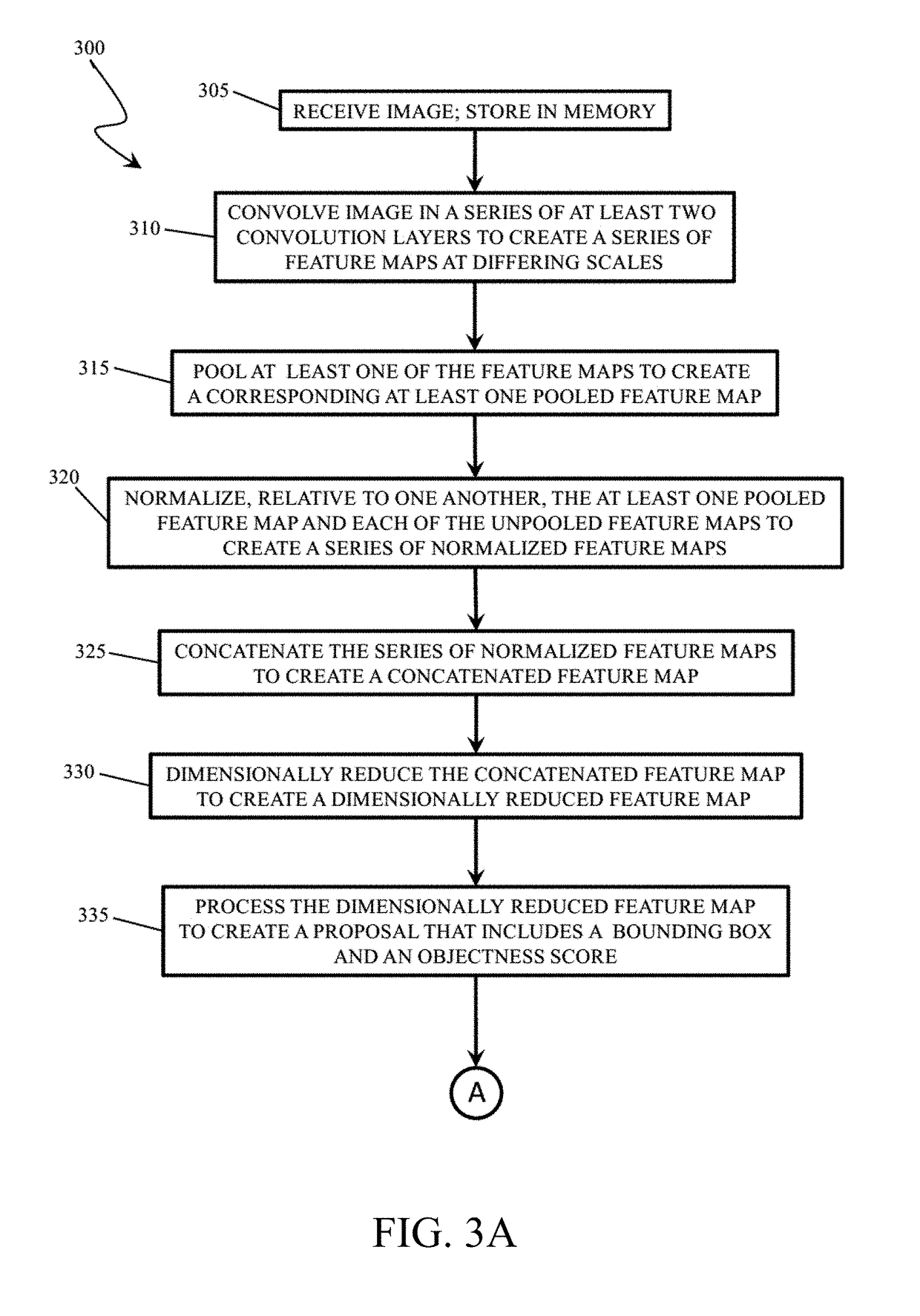Methods and Software for Detecting Objects in an Image Using Contextual Multiscale Fast Region-Based Convolutional Neural Network
- Summary
- Abstract
- Description
- Claims
- Application Information
AI Technical Summary
Benefits of technology
Problems solved by technology
Method used
Image
Examples
example implementation
[0058]III.4. Example Implementation Details
[0059]In one example implementation, a CMS-RCNN of the present disclosure was implemented in the open-source Caffe deep learning framework. The first 5 sets of convolution layers had the same architecture as the deep VGG-16 model, and during training their parameters were initialized from the pre-trained VGG-16. For simplicity, the last convolution layers in set 3, 4, and 5 are referred to as “conv3”, “conv4”, and “conv5”, respectively. All the following layers were connected exclusively to these three layers. In the MS-RPN, we want “conv3”, “conv4”, and “conv5” to be synchronized to the same size so that concatenation can be applied. So “conv3” is followed by pooling layer to perform down-sampling. Then “conv3”, “conv4”, and “conv5” are normalized along the channel axis to a learnable re-weighting scale and concatenated together. To ensure training convergence, the initial re-weighting scale needs to be carefully set. Here the initial scal...
PUM
 Login to View More
Login to View More Abstract
Description
Claims
Application Information
 Login to View More
Login to View More - R&D
- Intellectual Property
- Life Sciences
- Materials
- Tech Scout
- Unparalleled Data Quality
- Higher Quality Content
- 60% Fewer Hallucinations
Browse by: Latest US Patents, China's latest patents, Technical Efficacy Thesaurus, Application Domain, Technology Topic, Popular Technical Reports.
© 2025 PatSnap. All rights reserved.Legal|Privacy policy|Modern Slavery Act Transparency Statement|Sitemap|About US| Contact US: help@patsnap.com



